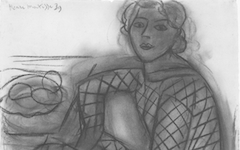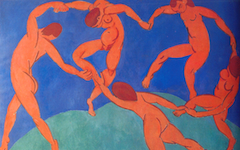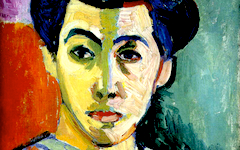Matisse’s The Serf (a sketch), (1900)
The Serf is one of Matisse’s most important early sculptures and several experts have suggested that Matisse might have felt a sense of identification with the figure. Albert Elsen and Jack Flam agree that the peculiar style in which The Serf is modeled calls attention to its authorship. Flam also noted the statue’s similarity to the stocky, bearded figure of the artist and has suggested that Matisse seems “psychologically to have identified” with the sculpture.1 Another thinks that Matisse, in dire poverty at the time, might have felt a kinship with the weight of problems bearing down on The Serf’s shoulders.2 This widely shared sense that Matisse identified with this work is, of course, correct based on the strong probability that, like most great masters, Matisse identified with all his art. Nevertheless, there is a simple piece of supporting evidence that provides proof: the initial of the artist's name.
In a very early sketch for The Serf that Matisse drew around 1900, not only does the figure recall the bearded artist – as Flam observed of the finished sculpture – but he stretches out one arm towards the edge of the frame like a sculptor working on a maquette. The key point here, though, is that the fingers of the other hand form the letter M. They may look poorly formed as though by a child but were, in fact, carefully drawn to make the hand, symbol of Matisse’s craft, into the initial of his name: Matisse.
More Works by Matisse
Notes:
1. Jack Flam, Matisse: The Man and His Art, 1869-1918 (Thames & Hudson) 1986, p. 88
2. Oliver Shell, Matisse: Painter as Sculptor (Dallas Museum of Art) 2007, p. 108
Original Publication Date on EPPH: 17 Sep 2010. | Updated: 0. © Simon Abrahams. Articles on this site are the copyright of Simon Abrahams. To use copyrighted material in print or other media for purposes beyond 'fair use', you must obtain permission from the copyright owner. Websites may link to this page without permission (please do) but may not reproduce the material on their own site without crediting Simon Abrahams and EPPH.




